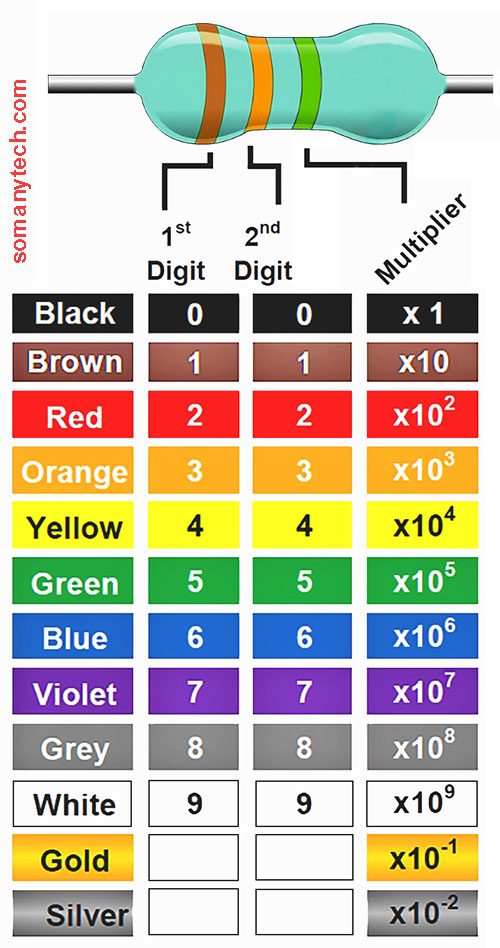3 Band Resistor Color Code Calculator – Online
The 3-band resistor color code calculator is a helpful online tool that simplifies the process of determining the resistance value of a cylindrical color band resistor. For long period, resistor values are conveyed through color-coded bands painted on the resistor, which could be challenging to read, particularly for those who are not familiar with the color-coding methods. Thankfully, the 4-band resistor color code calculator eliminates the guesswork and facilitates easy determination of resistor values. With this tool, you can enter the color bands of your resistor and get an instant calculation of its resistance value, thus taking the hassle out of resistor value calculations.
To use a 3-band resistor color code calculator, simply enter the colors of each band into the corresponding fields on the calculator from left to right.
3 Band Resistor Color Code Calculator
For example, let’s say you have a resistor with the colors Brown, Black and Red. To calculate the value of this resistor using the 3-band color code calculator, you have to enter “brown” in the 1st field, “black” in the 2nd field, “red” in the 3rd field.
Press the ‘Calculate’ button to get the values. And press the ‘Reset’ button to use it again.
Also Check, 4 Band Resistor Value Calculator here!

If you are on the way to calculate the 3 band resistor value on paper by looking at its color coded band then you can do so by following information.
Calculating the value of a 3-band resistor :
by looking at the color bands may seem challenging at first, but it’s actually quite simple once you understand how to do it:
Step 1: Identify and Determine the color for each band on resistor
Next, you need to determine the color codes for each of the 3 bands. The color codes for the first two bands represent the resistance value of the resistor. The third band represents the multiplier or number of zeros, and the fourth band is absent here, which represents the tolerance.
Step 2: Calculate the resistance value and tolerance value
In order to calculate the resistor’s resistance value, combine the first two color bands and multiply them by the multiplier value represented by the third band. The absence of fourth band represents the tolerance value of the resistor is ± 20%, which shows the range in which the actual resistance value can vary from the exact value and intended value in %.
For example, if the bands on the body of the resistor are Red, Red and Orange.
Then from the table 1st red band means significant digit of 2, second red band means significant digit 2, third is Orange means multiplier means 10^3, and the 4th Absent means 20% tolerance.
Thus, the resistor value is 22 *10^3 and its tolerance is 20% that is 22 kΩ ± 20%




